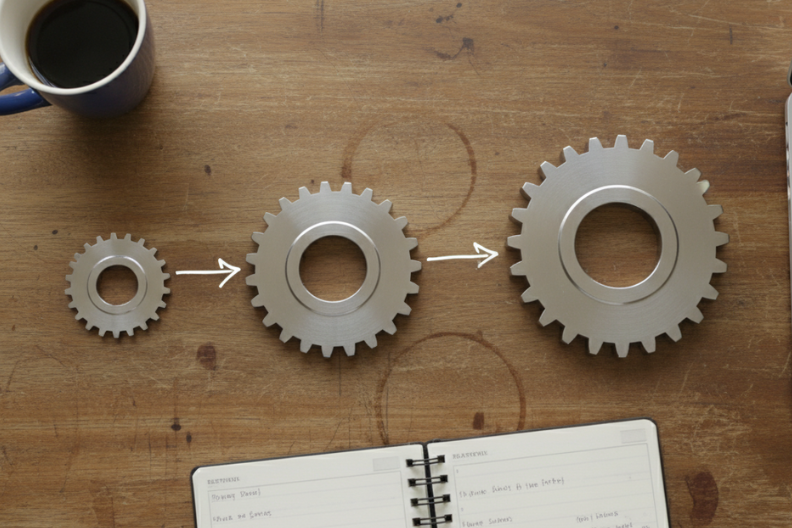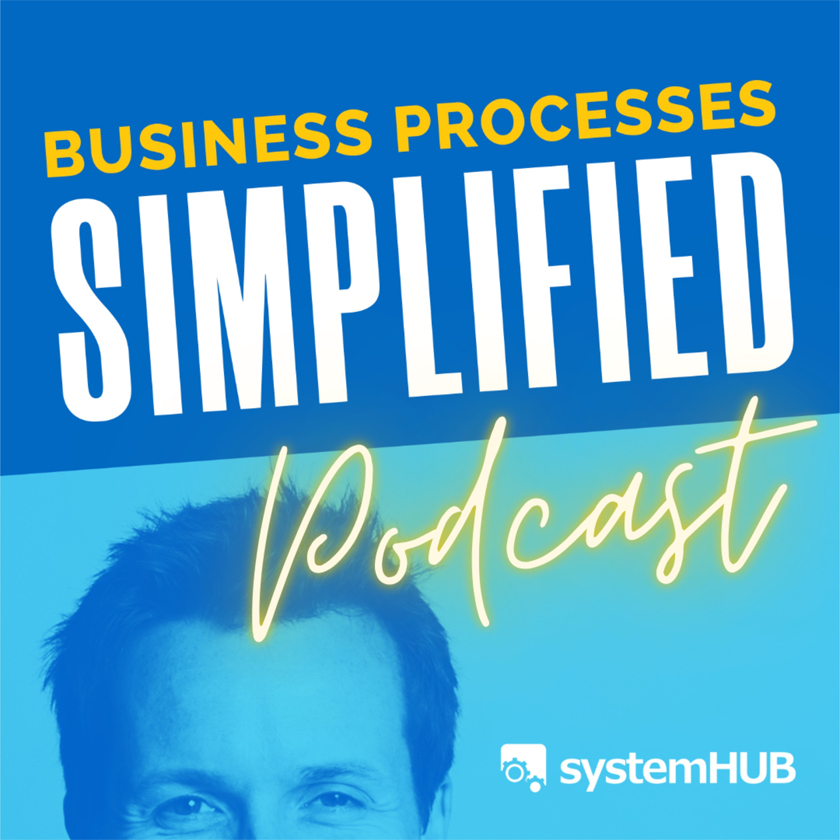The average business owner lives in constant motion, juggling everything required to keep up, solve problems, please customers, pay bills, and generate profit.
In that chaos, it’s easy to believe success requires dramatic breakthroughs, expensive software, or complex strategies. We chase breakthrough ideas and silver bullets, hoping for dramatic transformations that will revolutionize our businesses overnight.

But often, real transformation comes from small, consistent actions.
The truth is, many of the biggest gains in performance, culture, and profitability come from simple acts: practical, inexpensive changes that anyone can start today.
These acts don’t demand huge budgets, specialized expertise, or months of planning. They rely on timeless principles of human behavior, systematic thinking, and operational discipline. When practiced daily, these small steps create compounding results.
What makes simple acts powerful is how quickly they work. While others overcomplicate, you can take action now. Each improvement builds momentum, strengthens culture, and sets the stage for bigger, system-driven change later.
Consistency is the real catalyst. When simple acts become habits, they reshape how people think and work. They help your business evolve into a more systematic, efficient, and resilient organization: one that improves a little every day instead of chasing the next big idea.
Simple Acts to Transform Your Business
Making Things Systematic
Smart Business Solutions Case Study
Connecting Simple Acts to Business Excellence
Technology Tools for Amplification
Measuring the Impact of Simple Acts
Common Challenges and How to Overcome Them
Your Action Plan
Frequently Asked Questions
Small Steps, Extraordinary Results
Transform Your Business with Small Changes
Simple Act 1: Master the Art of Human Connection
A smile, a kind word, and genuine gratitude might seem small, but these actions lift everyone you meet and build loyalty that drives performance. This isn’t about polite gestures. It’s about authentic connection that turns ordinary interactions into memorable experiences.
Human connection is the foundation of every strong business relationship. When customers feel valued and employees feel appreciated, they become advocates instead of transactions. That emotional bond creates an edge competitors can’t copy with price or product alone.
Build this into your systems. Train your team in genuine relationship-building. Create regular touchpoints for appreciation. Document the language and behaviors that reflect your values, while giving people room to be authentic.

Track your progress with customer satisfaction scores, employee engagement, retention rates, and referrals. Record tangible actions: thank-you notes sent, personal recognition given, positive feedback received. Use reminders or prompts to encourage connection every day.
When genuine appreciation becomes habit, everything changes. Employees who feel seen treat customers better. Customers who feel valued stay longer. That cycle compounds, creating a culture of loyalty and excellence.
Simple Act 2: Create Foolproof Checklists
Checklists may not sound exciting, but they prevent mistakes, save time, and build consistency. They capture the details that ensure work gets done right every time, regardless of experience or skill level.
A well-designed checklist highlights critical steps, decision points, and quality checks. It transforms individual knowledge into a repeatable process that anyone can follow.
Keep your checklists clear and practical. Focus only on essential steps, use plain language, and test them with real users. Refine based on feedback so they stay relevant and useful.
Connect each checklist to your broader documentation system. Use them as building blocks for full process manuals. Train your team to use them properly, review them regularly, and track results such as fewer errors, faster turnaround, and improved consistency.
Industries like aviation and medicine rely on checklists to save lives. While business stakes may be different, the principle remains the same: checklists reduce risk and raise standards.
Simple Act 3: Measure What Matters and Share Results
What gets measured gets managed, and what gets shared gets improved.
Measuring what matters builds transparency, focus, and motivation.
Identify the few metrics that directly link to customer satisfaction, efficiency, and business results. Prioritize leading indicators (those that predict outcomes) over lagging ones that only confirm them.
Make performance visible. Use dashboards, scorecards, or quick updates to show team members how their work contributes to bigger goals. Celebrate wins, discuss challenges, and use data to drive improvement, not blame.
“What gets measured gets managed, and what gets shared gets improved.”
Look beyond numbers for insights. When performance dips, examine the process, not just the person. Fixing the system builds trust and drives sustainable progress.
Tools like systemHUB can help centralize your metrics, create dashboards, and share results across teams. The goal is transparency that empowers people to improve.
People naturally respond to clear indicators when they see how their efforts make a difference. That intrinsic motivation fuels steady, long-term growth far better than short-term rewards.
Simple Act 4: Dig Deep with Root Cause Analysis
Problems rarely appear out of nowhere. Most are symptoms of deeper issues hidden within your systems. Fixing surface problems without addressing their root causes only guarantees they’ll return later.

Root cause analysis helps you uncover what’s really going on. The “5 Whys” method is a simple and powerful way to do this. Start with the problem statement, ask why it happened, then ask why that cause existed. Repeat until you reach the fundamental issue you can fix for good.
Train your team to apply this mindset. Encourage curiosity instead of blame. Document what you discover and the solutions you apply so others can learn from it. Over time, these learnings build an internal library of insights that prevent repeated mistakes.
When systematic root cause analysis becomes part of daily thinking, your organization becomes more resilient and adaptive. Problems turn into opportunities to learn and improve. Instead of putting out fires, you build a culture that prevents them from starting in the first place.
Simple Act 5: Create an Impressive Physical Environment
Your environment speaks before you do. A clean, organized, and efficient workspace signals professionalism, care, and consistency. Customers notice it. So do your employees.
Clutter and disorganization waste time, lower morale, and create doubt about your business standards. A tidy, well-maintained environment builds trust and pride.
Apply the 5S method from lean manufacturing to structure your space:
- Sort: Remove what you don’t need.
- Set in order: Organize what remains.
- Shine: Keep it clean.
- Standardize: Create simple rules for maintaining order.
- Sustain: Review and refresh regularly.
Beyond aesthetics, this approach improves efficiency, reduces searching and rework, and helps people focus. Create maintenance schedules and accountability systems to ensure improvements last.
Document your environmental standards so every location operates consistently. Use tools like systemHUB to track maintenance and improvements. When order becomes habit, excellence becomes visible.
Simple Act 6: Assign Clear Ownership and Accountability
Accountability drives performance. When everyone knows who owns what, work gets done faster and more effectively.
Unclear ownership causes confusion, overlap, and missed opportunities. Clear responsibility ensures every system, process, and activity has someone accountable for results.
Define who owns each process, what success looks like, and how progress is measured. Make this information visible and easy to update as your business evolves. Clear documentation prevents misunderstandings and empowers people to make decisions confidently within their roles.
“When everyone knows who owns what, work gets done faster.”
Consider appointing a Systems Champion: someone responsible for maintaining and improving your business systems. This dedicated focus ensures your processes continue to evolve, not just operate.
Regular team accountability reviews keep ownership current and encourage recognition and learning. Over time, these habits build a culture where people take pride in their work and performance naturally improves.
Simple Act 7: Track Your Key Performance Indicators
You can’t improve what you don’t measure. Tracking key performance indicators (KPIs) keeps your team focused on what truly matters.
Choose metrics that connect directly to customer satisfaction, efficiency, and profitability. Avoid measuring activities that look busy but don’t move the business forward. Combine leading indicators, which forecast performance, with lagging ones that confirm results.
Create simple dashboards that make data visible and actionable. Share progress regularly, highlight trends, and discuss what the numbers mean. Use these reviews to learn, solve problems, and celebrate success, not to assign blame.
When KPIs are clear and consistent, people understand how their daily work contributes to the bigger picture. This clarity drives accountability, motivation, and steady improvement.
Simple Act 8: Tap Into Your Team’s Ideas
Your team already knows where the problems are, and often how to fix them. The simple act of asking for their input uncovers valuable insights and creates a culture of collaboration.
Frontline employees see daily challenges and inefficiencies firsthand. By inviting their suggestions, you unlock practical solutions that management might never notice.

Build a simple system for collecting and reviewing ideas: suggestion forms, feedback sessions, or short improvement meetings. Recognize contributions publicly and act on good ideas quickly. Nothing kills engagement faster than feedback that goes nowhere.
Track implemented ideas and share their impact so people see real results. Over time, this process builds trust and ownership.
When people feel heard, they care more deeply about outcomes and continuously look for ways to improve.
Simple Act 9: Implement Your WOW Factor
A WOW factor turns a routine experience into something people remember and talk about. These small moments of surprise and delight strengthen loyalty and word-of-mouth marketing.
Look for opportunities in your existing processes to exceed expectations. It might be a personal note, an unexpected upgrade, or a faster response time. Document these touchpoints so your team can deliver them consistently.
“A WOW factor turns a routine experience into something people remember.”
Train employees to spot moments where they can create a WOW experience and give them the freedom to act. The goal is authenticity, not gimmicks.
Measure the effect through customer feedback, referrals, and retention. When WOW moments become part of your system, they set your business apart and create a reputation for genuine care.
Simple Act 10: Run Weekly Improvement Workshops
Weekly improvement workshops keep momentum alive and make continuous improvement a normal part of business life. They give teams structured time to analyze systems, solve problems, and apply new ideas together.
Keep these sessions focused. Choose a process or issue to improve, then work collaboratively on solutions. Use short, consistent agendas that encourage participation and action.
Document outcomes, track progress, and share wins across the organization. This transparency reinforces the value of improvement and motivates others to join in.
Over time, these workshops shape culture. They teach teams to think systematically, solve problems proactively, and celebrate progress. With consistent focus, small weekly improvements add up to world-class performance.
Implementation Framework: Making Simple Acts Systematic
Step 1: Choose Your Starting Point
Conduct an honest assessment of your current business performance. Identify which simple acts will create the biggest impact with the least complexity.
Use clear criteria: impact on customer satisfaction, ease of implementation, required resources, and alignment with business goals. This helps you focus on changes that deliver real results quickly.
Factor in your team’s readiness. Begin with actions that build confidence and show quick wins, then expand to more advanced improvements as capability grows.
Set realistic timelines that balance urgency with consistency. It’s better to do fewer things well than burn out chasing too many changes at once.
Document your assessment and priorities in systemHUB so progress is visible and accountability is clear across the team.
Step 2: Create Implementation Systems
Turn simple acts into lasting habits by building systems that make them easy to follow and hard to forget.
Create procedures, checklists, and quick-reference guides to standardize execution. Train your team so everyone understands what “good” looks like.
Build in accountability: hold short reviews, track progress, and recognize wins. When people see their efforts matter, momentum builds.

Measure both consistency and impact. The data doesn’t just prove ROI: it fuels motivation and guides future improvements.
Step 3: Build Sustainable Habits
Long-term success comes from culture, not one-off efforts. Reinforce new habits until they become second nature.
Use visual reminders, peer accountability, and routine check-ins to keep improvements on track. Celebrate small wins and address obstacles early.
When a simple act proves successful, document it, train others, and scale it across the business. Replication creates consistency while amplifying results.
Keep refining as your business evolves. Continuous improvement isn’t a project. It’s a mindset.
Real-World Results: Smart Business Solutions Case Study
Shannon Smit’s Smart Business Solutions shows how small, systematic steps can create massive results.
They started by documenting basic processes in systemHUB, making “Is it in systemHUB?” a company mantra. This foundation made it easier to track efficiency, automate repetitive tasks, and engage the team in improvement.
One automation saved 998 hours per year, while another eliminated two hours of daily admin work. Each simple act freed time and energy for higher-value activities.
“Businesses that commit to small, consistent improvements often see extraordinary results.”
The cultural shift was just as powerful.
What began as cautious adoption turned into excitement for innovation. Team members now suggest new automation opportunities and actively contribute to system improvements.
Shannon’s framework is simple and repeatable:
- Measure how long key processes take.
- Identify repetitive, low-value tasks.
- Prioritize by ROI.
- Use documented systems to guide improvements.
By building systematically, Smart Business Solutions didn’t just become more efficient: they became a business that continually improves itself.
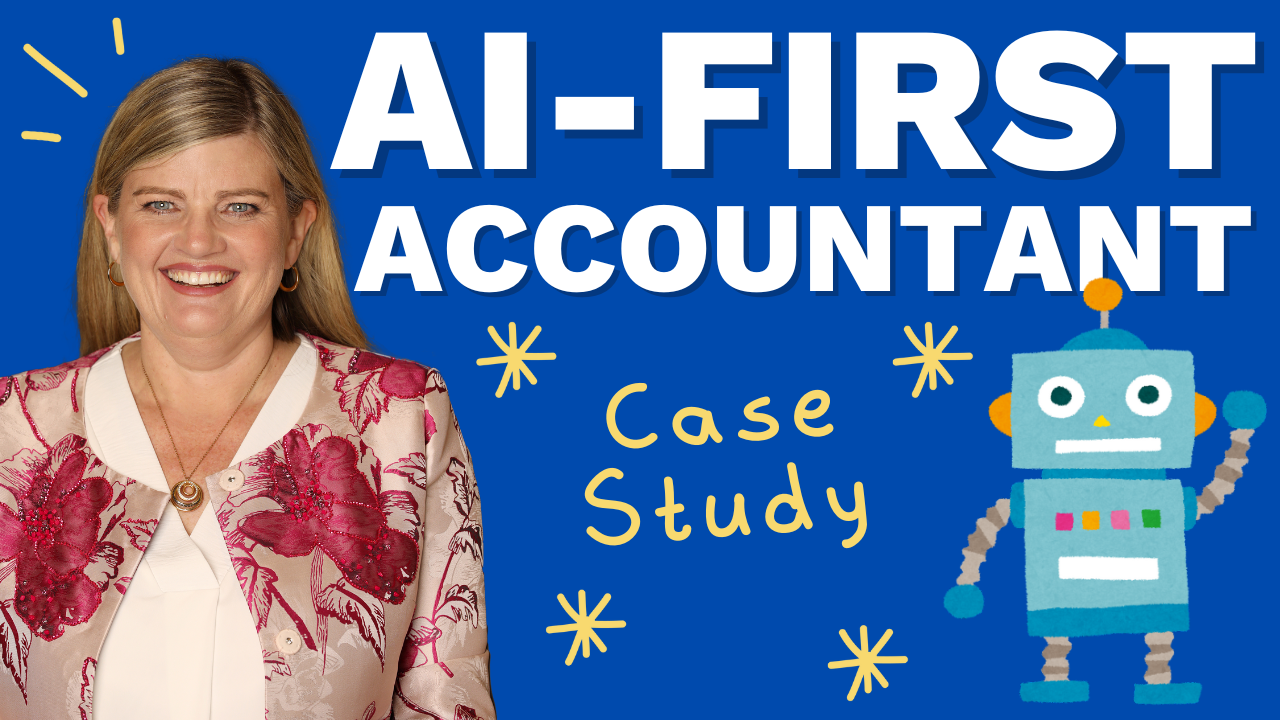
And they’re not alone. Businesses that commit to small, consistent improvements often see similar results: stronger systems, more confident teams, and operations that run smoothly without constant firefighting.
Simple acts, done systematically, compound into extraordinary transformation.
The Systematic Advantage: Connecting Simple Acts to Business Excellence
From Simple Acts to Systematic Operations
Simple acts are more than small improvements; they are the foundation for full-scale business transformation. Each one builds capability, confidence, and culture, preparing your organization for more advanced systematic approaches.
This progression follows a clear pattern: small wins create momentum, momentum builds consistency, and consistency evolves into a culture of improvement. Over time, systematic thinking becomes part of how your business operates every day.
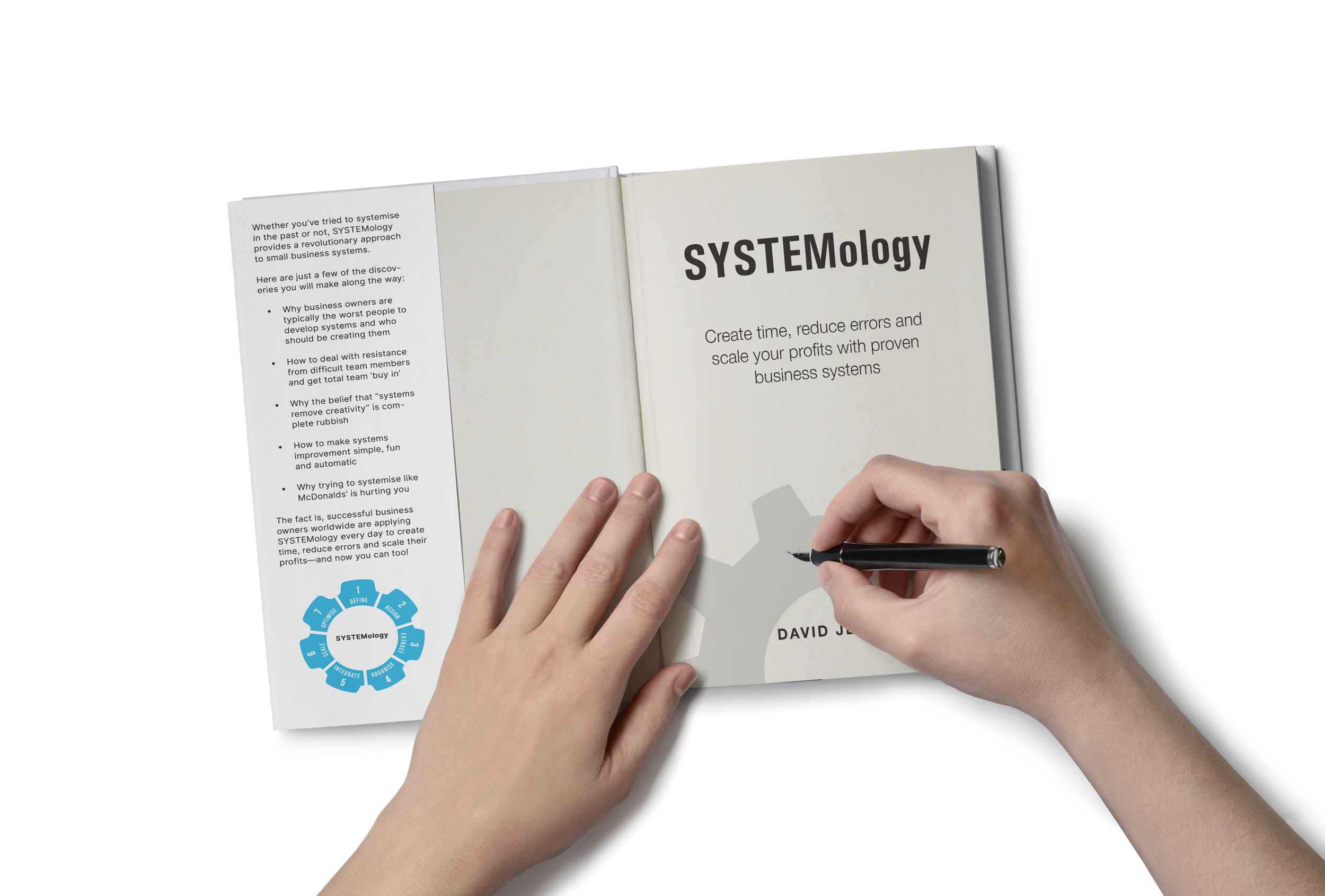
SYSTEMology principles help scale these simple acts into broader transformation by linking individual improvements to a larger operational framework.
Instead of isolated fixes, you create a connected ecosystem where every process supports your core objectives.
Businesses that master simple acts systematically develop the readiness and structure needed for advanced systems work, from process documentation and optimization to automation and AI integration.
The compound effect is powerful. Each improvement reinforces the next, building resilience, adaptability, and excellence across the entire organization.
“Small wins create momentum. Momentum builds consistency. Consistency evolves into culture.”
When simple acts become systematic habits, businesses stop relying on heroic effort and start running on predictable, scalable systems. That is where freedom, consistency, and sustained growth begin.
Technology Tools for Amplifying Simple Acts
Platforms like systemHUB make it easier to document, track, and scale simple acts across an organization. They create accountability, visibility, and a structured way to turn small improvements into lasting business impact.
Digital tools also help teams stay consistent by centralizing procedures, tracking progress, sharing wins, and analyzing results. They make improvement measurable and repeatable.
Technology amplifies simple acts by reducing friction, offering reminders, and highlighting performance trends. It also enables quick sharing of best practices so everyone benefits from what works.
The key is to use technology to support systematic improvement, not replace human judgment or authentic relationships.
When used well, digital tools strengthen the principles behind simple acts: helping businesses scale improvements, measure outcomes, and build the systematic habits that compound over time.

Measuring the Impact of Simple Acts
Measuring the results of your simple acts helps prove their value and sustain momentum. The goal is to track not only operational wins but also long-term cultural and capability growth that drives lasting success.
Key Metrics to Watch
Look for improvements in customer satisfaction, employee engagement, error rates, efficiency, retention, and financial performance. These indicators link small actions to tangible business results.
Calculating ROI
When assessing ROI, include time savings, productivity gains, revenue increases, and reduced risk or rework. Balance these against implementation effort and ongoing maintenance. Even modest improvements can deliver strong returns once multiplied across the business.
Building a Business Case
Document your starting point, estimate the benefits, and compare projected results against actual performance. This helps secure buy-in and shows how simple acts pave the way for larger systematic improvements.
Tracking Long-Term Impact
Beyond numbers, measure how your team’s mindset and problem-solving habits evolve. Look for growing ownership, collaboration, and adaptability: signs that simple acts are taking root and shaping a stronger business culture.
Common Challenges and How to Overcome Them
Maintaining consistency
Build habits through simple, repeatable systems. Use reminders, accountability, and regular check-ins to keep progress steady even when priorities shift.
Getting team buy-in
Show quick wins early. Involve your team in choosing and testing improvements. Celebrate results so everyone sees the value of systematic thinking.
Scaling as you grow
Document what works. Train new team members with clear processes and checklists so quality and impact stay consistent as your business expands.
Avoiding “initiative fatigue”
Focus on what’s sustainable. Strengthen existing systems before launching new ones. Connect each improvement to your bigger business goals.
Overcoming implementation obstacles
Stay flexible but focused. Adapt methods to your team’s culture and pace. Keep building momentum through small, steady progress rather than trying to fix everything at once.
Your Simple Acts Action Plan
Stay flexible but focused. Adapt methods to your team’s culture and pace. Keep building momentum through small, steady progress rather than trying to fix everything at once.
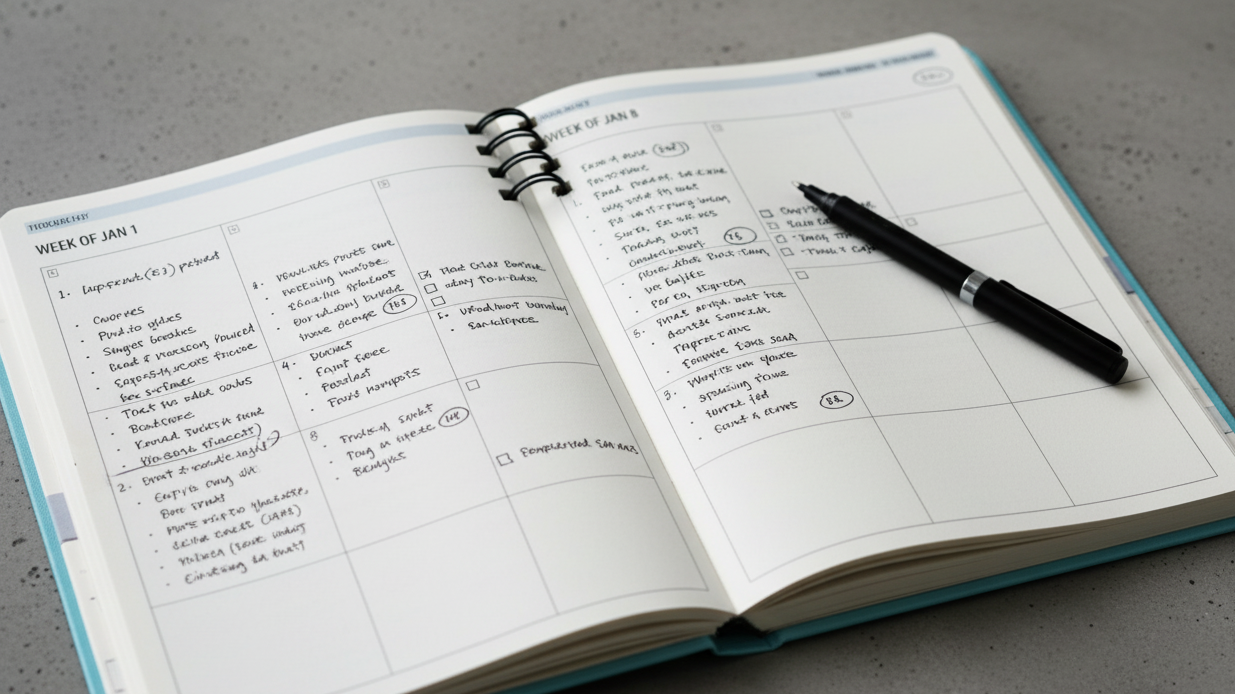
- Week 1-2: Assessment and Priority Setting
Evaluate your current performance across the 10 simple acts. Identify quick wins with high impact and low complexity. Document priorities and set clear goals. - Week 3-4: Human Connection and Environment
Focus on how you interact with customers and team members. Improve workspace organization and create systems to track satisfaction and engagement. - Week 5-6: Measurement and Feedback Systems
Establish KPIs, performance dashboards, and feedback channels. Use this data to spot opportunities for improvement and recognize what’s working. - Week 7-8: Ownership and Accountability
Assign responsibility for key processes. Hold regular reviews to ensure progress, and encourage your team to suggest improvements. - Week 9-12: WOW Factors and Systematic Integration
Systematically deliver small, delightful experiences for customers and staff. Connect your improvements into a cohesive system that runs smoothly day to day. - Month 4-6: Scaling and Refinement
Systematically deliver small, delightful experiences for customers and staff. Connect your improvements into a cohesive system that runs smoothly day to day.
Use this plan as a flexible guide rather than a strict schedule. What matters most is steady, systematic progress.
Frequently Asked Questions About Business Improvement
Conclusion: Small Steps, Extraordinary Results
The path to business excellence doesn’t start with massive overhauls or expensive technology. It begins with simple acts applied consistently and systematically. Each one builds capability, creates momentum, and strengthens your foundation for bigger transformation.

These ten simple acts are practical, immediate, and adaptable to any business, regardless of size or industry. More importantly, they form the building blocks of long-term success. A smile strengthens loyalty. A checklist prevents mistakes. Tracking performance drives improvement. Root cause analysis stops recurring issues. Each act supports and amplifies the others until systematic excellence becomes part of how your organization operates.
Smart Business Solutions showed what’s possible. They began by documenting processes in systemHUB and soon built the capabilities to automate, integrate AI, and eliminate hundreds of hours of manual work. What started as small, consistent improvements turned into a complete shift in how their business runs.
“The path to business excellence doesn’t start with massive overhauls or expensive technology. It begins with simple acts applied consistently and systematically.”
Your journey can follow the same pattern. You can continue managing daily chaos or take small, intentional steps toward sustainable improvement. As Ron Carroll once said, “By small and simple acts are great things brought to pass.”
The tools exist. The systems work. The success stories are real. Platforms like systemHUB make implementation easier, but the real driver is your commitment to act.
You don’t need perfection to begin, just progress. Start with one simple act. Document it. Share it. Build momentum. Each improvement strengthens your systems, your people, and your results.
Your extraordinary transformation begins the moment you take that first simple act.

